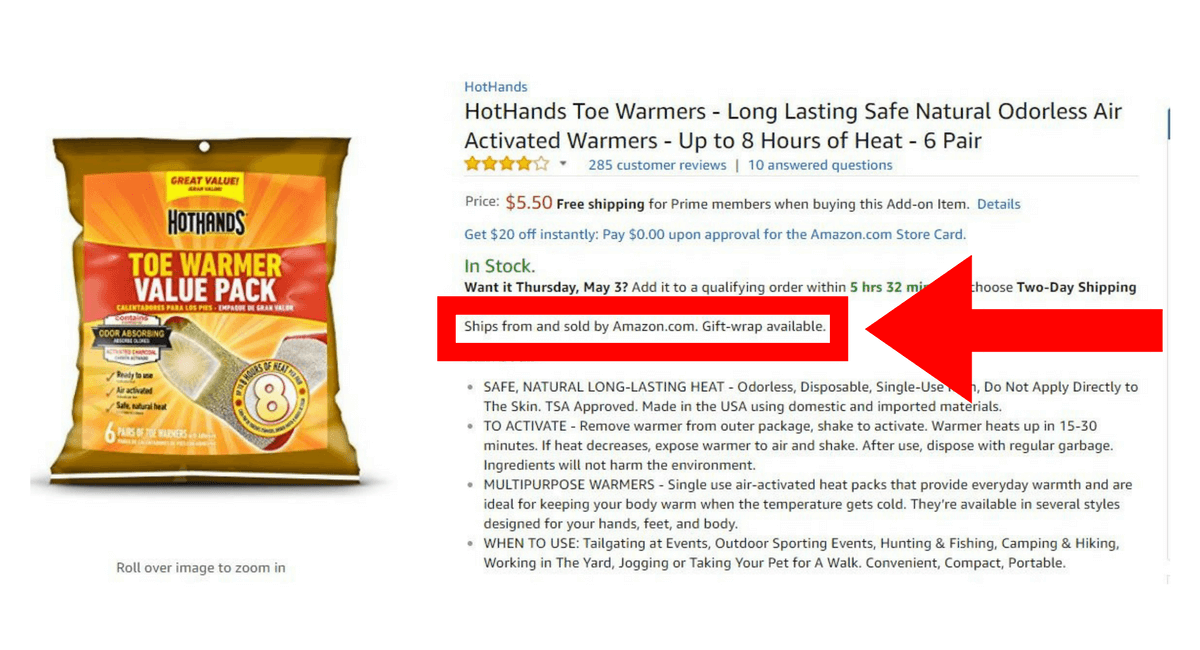Acting as a third-party seller isn’t the only way to make money off of Amazon. You can also choose to sell your products directly to Amazon itself, which will then sell your products for you.
It’s the difference between being an Amazon “seller” and an Amazon “vendor” – each of which comes with its own unique dashboard and resources.
Not sure which one you should use? Need help transitioning from one to the other? Let’s take a look at the key differences in each below.
Amazon Sellers vs. Vendors

The biggest difference between Amazon sellers and vendors is who’s actually selling the product.
- Sellers list, price and market their products themselves.
- Vendors sell their products to Amazon-employed buyers, who then list and resell the products to Amazon users.
Vendor Central Pros and Cons:
Pro: “Sold By Amazon”
Amazon sellers can join Vendor Central only via invite from the corporate team. Once they’re on board, their products will then be listed as “sold by Amazon” – likely offering a boost in shopper trust and confidence.

Pro: Marketing Tools
Vendors also enjoy added marketing opportunities through AMS (Amazon Marketing Services) and are only responsible for the back-end of the supply chain – inventory, billing, etc.
AMS offers effective tools to help vendors stand out against their competitors and drive traffic to product detail pages and branded pages. As vendors know, every click does not equal a purchase – so it is important to understand how to leverage AMS to its full potential.

The primary benefit of using AMS over other services, is that it gives sellers/advertisers a direct opportunity to get their products and brand in front of additional in-market shoppers on Amazon.com.
Specifically, the ability to target individual product detail pages gives sellers an opportunity to introduce their products directly alongside competitor products when consumers are at the last stage prior to conversion.
Pro: Avoid Fees
Vendors avoid typical Amazon seller fees, which includes costs for referrals, fulfillment or even just having an account in the first place. Instead, vendors pay a flat fee for going “pro,” which allows them to sell unlimited products for $39.99 per month. It also includes fulfillment by Amazon and gift wrapping options.
FREE GUIDE: “Evaluating Amazon’s Vendor Premium Services“
Still, despite its obvious advantages, Vendor Central isn’t without its drawbacks.
Con: Margins
Since pricing is fully in the hands of Amazon, vendors may not see the profit margins they were hoping for on certain products. There are no minimum pricing policies, so a vendor could, technically, even lose money if the price drops too low.
Con: Inventory Concerns
Being an Amazon vendor also comes with some high stakes logistical concerns. Amazon can be pretty demanding when it comes to inventory and order fulfillment, and new vendors often struggle to maintain the proper stock levels.
Con: New Product Launches
If you are a vendor, it can be difficult to launch products using Vendor Central alone. Amazon has no incentive to buy that product from you because they don’t know the potential of the new product just yet.
Amazon is unsure of how sales will preform. It could be a successful product in the future but Amazon isn’t likely to place purchase orders on an item with no history.
Seller Central Pros and Cons:
Pro: More Control
Though sellers do have to put in more work (and maybe more money in fees), they tend to have a bit more control than their vendor counterparts. They’ll need to pay various fees per item and per sale, and they’ll also have to manage their own pricing, customer communication and fulfillment (unless they pay extra for FBA.)

“Typically, 3P sellers have more control over their products,” David Cooley, Manager, Marketplace Channels at CPC Strategy said.
“They also have more control over their customers because if you’re a vendor you’re selling items (purchase orders) of your product(s) to Amazon (depending on how many they want to buy) and then Amazon sells those products to your customers.”
“But if you’re a 3P account, then you’re selling directly to your customers via the Marketplace and so there’s a little bit less of disconnect between the manufacturer and the actual customer. (Think of Amazon as the middle man – and you’re removing him from the equation). You’re also in control of pricing, promotions, and the number of units you want to sell.”
Pro: Better Analytics
But those using Seller Central also get access to detailed analytics that can help them boost their bottom line, and they’re able to better control their returns by heading off unhappy customers directly. Additionally, pricing control allows them to easily take advantage of high-demand periods or offer sales – something vital to staying competitive in the holiday season.
Con: Not “Sold by Amazon”
Overall though, sellers typically see fewer sales than vendors, simply because they don’t come with the “sold by Amazon” endorsement. For many sellers, the added flexibility of the program is worth the decrease in sales.
Summary of Vendor Central vs. Seller Central:
Let’s do a quick summary of how Amazon’s Vendor Central and Seller Central measure up.
- Access – Vendor Central: Invite only, Seller Central: Open to any seller
- Pricing – Vendor Central: Amazon controls, Seller Central: Seller controls
- Marketing – Vendor Central: Access to Amazon marketing services and A+ content; Seller Central: Access to enhanced brand content
- Sales – Vendor Central: Sell to Amazon, Seller Central: Sell to Amazon customers
- Logistics – Vendor Central: Adhere to Amazon’s logistics process; Seller Central: Sellers control their own logistics or use FBA
- Messaging – Vendor Central: Amazon handles messaging and returns, Seller Central: Sellers handle messaging and returns
- Analytics – Vendor Central: No analytics to view, Seller Central: Robust analytics to improve sales and marketing efforts
- Fees – Vendor Central: $39.99 flat rate per month for unlimited sales, Seller Central: Traditional Amazon seller fees
Though you can’t outright choose to become an Amazon Vendor, it’s important to study up on these pros and cons in the event you’re offered an invite to the platform.
Both Vendor Central and Seller Central come with very unique advantages, so the right one for you will depend on your resources as a merchant, the level of control you want and the fees you’re willing to pay.
To learn more about Amazon Seller Central, Vendor Central or various Amazon seller fees, email [email protected].
You Might Be Interested In













